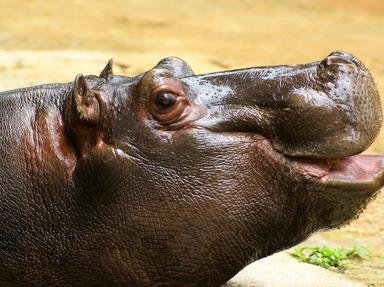Quiz Answer Key and Fun Facts
1. Many sources believe the animal (partially) shown in the photo has been "managed" by human beings for several thousands of years. Mankind recognized and appreciated its value centuries before then, as well. What insect is shown?
2. Even without a vast knowledge of herpetology (the study of snakes) you should be able to identify the animal (partially) shown in the photo. It is a venomous snake indigenous to the southwest United States and Mexico. The segments at the tip of the tail click together to produce the sound responsible for giving this animal its name. What is it?
3. The animal (partially) shown in the photo is a uromastyx. The range of this herbivorous reptile includes parts of Northeast and North Africa and the Middle East. Its most widely used (common) name is derived from its thick, spiked tail. What is that common name for this creature?
4. Whale watching can be a wonderful oceanic activity. In the early 21st century it has become so popular some scientists worry that is may affect whale behavior. The whale (partially) shown in the photo is a baleen whale and easily identified by its "wavy" fluke - the appearance of a frayed outer edge of the tail fin. Which whale, with a unique body shape too, is shown in the photo?
5. The animal (partially) shown in this photograph is named for its tail. The white undersides of this animal is most visible as it is retreating. It is indigenous to North America, Central America and (some of) northern and central South America. If you know your lagomorphs you will recognize this one. Which one is it?
6. The carnivore (partially) shown in the photo is one of most widely distributed carnivores in the Northern Hemisphere. This animal has been well represented in fact and folklore as long as communication has been recorded. Can you name the creature that seems to suggest adjectives such as: sly, quick, agile, clever, cunning - and beautiful?
7. The sexual dimorphism - or, difference(s) between the male and female - of this big cat make it unique within the feline family. The big cat (partially) shown in the photo is the only member of the cat family with a tasseled tail. This is tassel is more than just a pretty paintbrush; it serves to communicate many expressions and messages within the animal's group. What animal is it?
8. The animal (partially) shown in the photo is the largest animal to use hopping as its primary way of locomotion. It is a marsupial that is indigenous to Australia. The largest members of this species can be almost five feet tall and reach a top hopping speed of more than 40 miles per hour. What animal is shown?
9. Disclaimer: The photo has NOT been color enhanced! The ischial callosities (or, calloused buttocks) of the animal (partially) shown in the photo are often that colorful. This animal is a primate of the Old World monkey family and can be seen in its natural habitat in a few of the most western, central African countries. Which animal?
10. The dizzyingly beautiful bird (partially) shown in the photo is a close relative (genetically speaking) of the pheasant. Its covert tail feathers are more correctly called a "train". Nature's exact purpose for this elaborate display has been the subject of much debate and is a feature of the male bird, only. What bird is it?
Source: Author
cowboybluedog
This quiz was reviewed by FunTrivia editor
rossian before going online.
Any errors found in FunTrivia content are routinely corrected through our feedback system.
